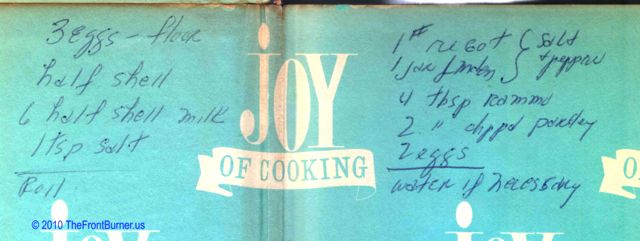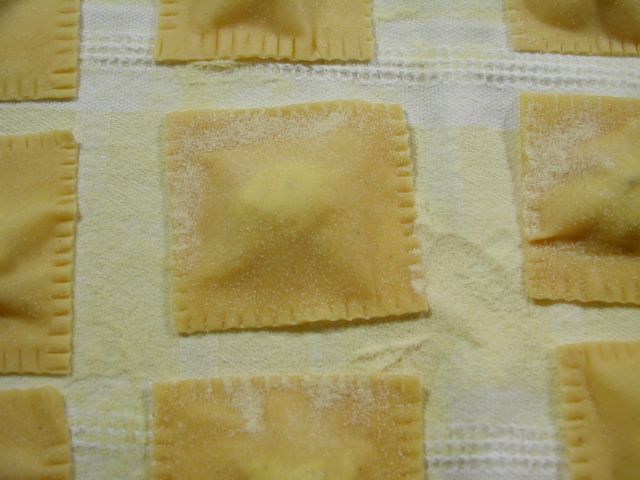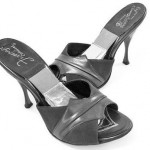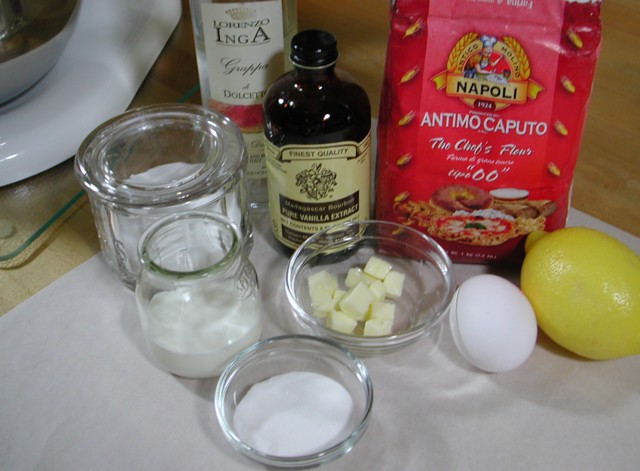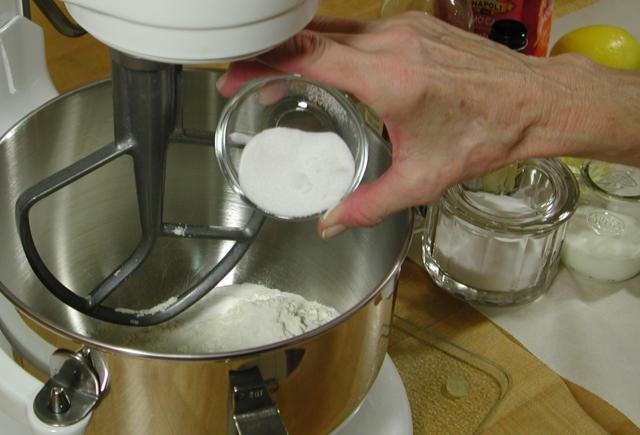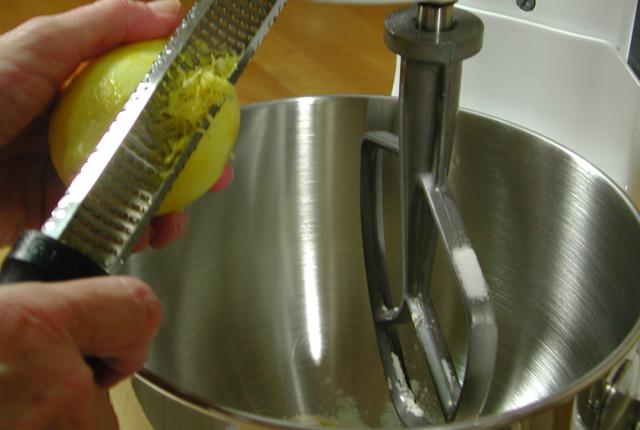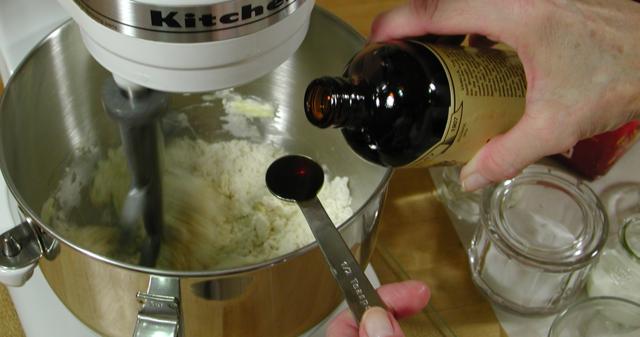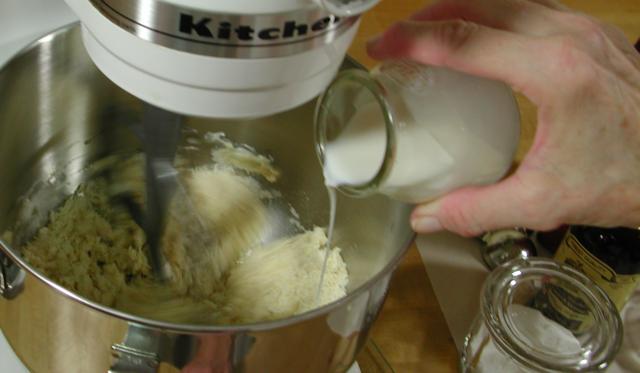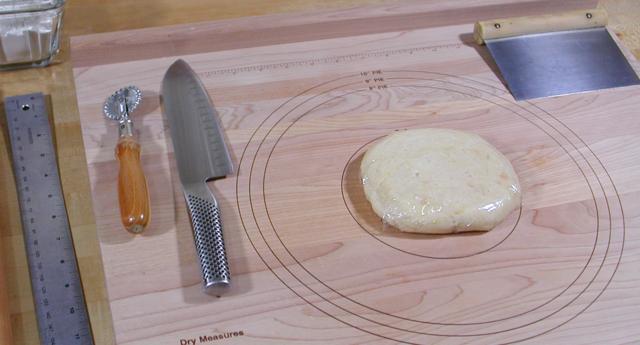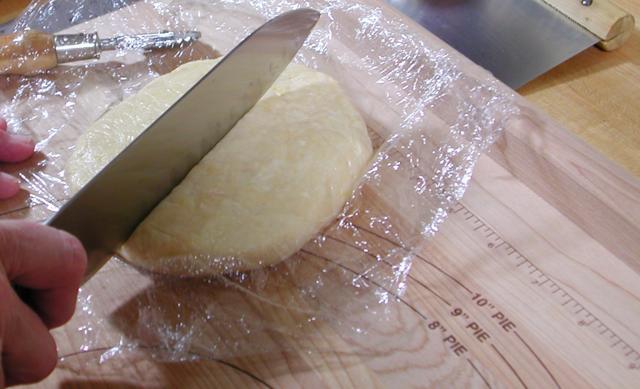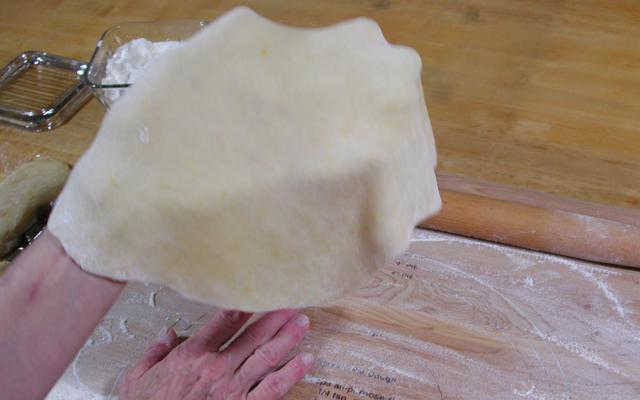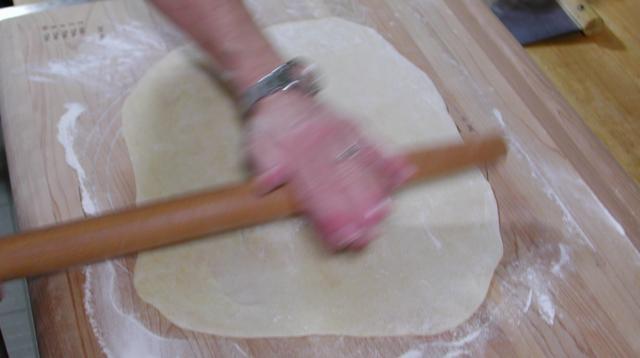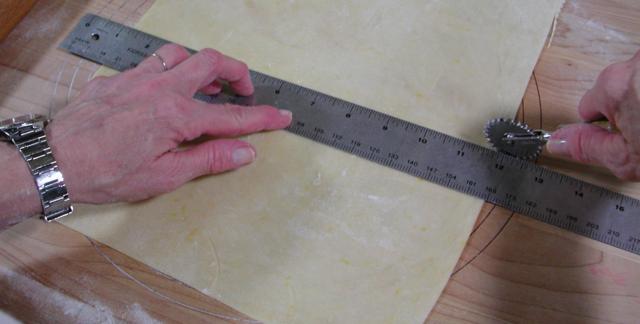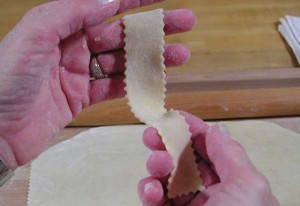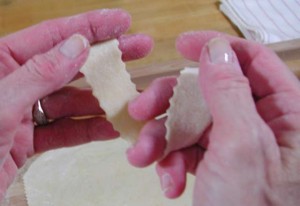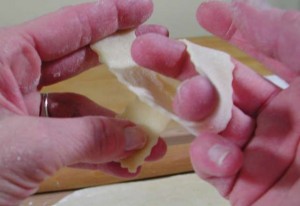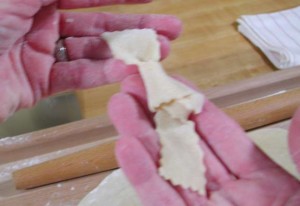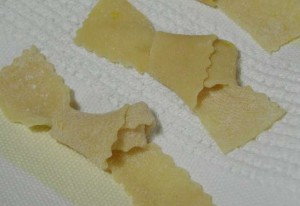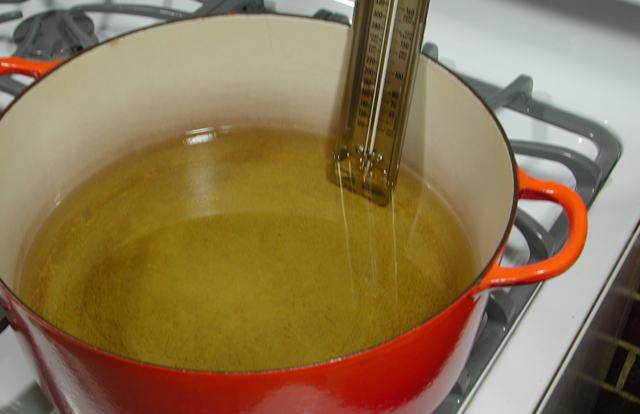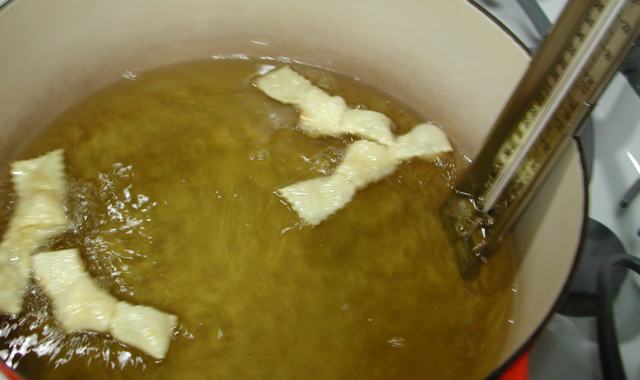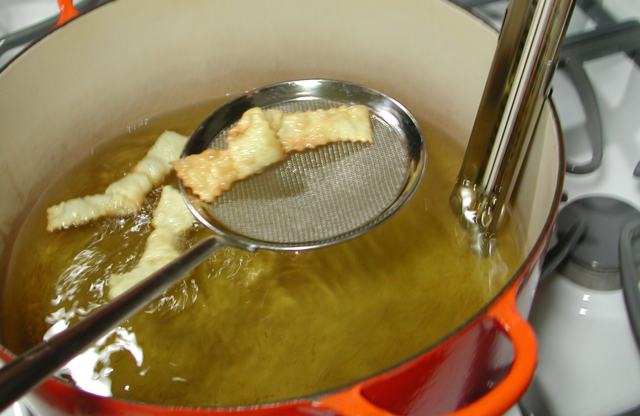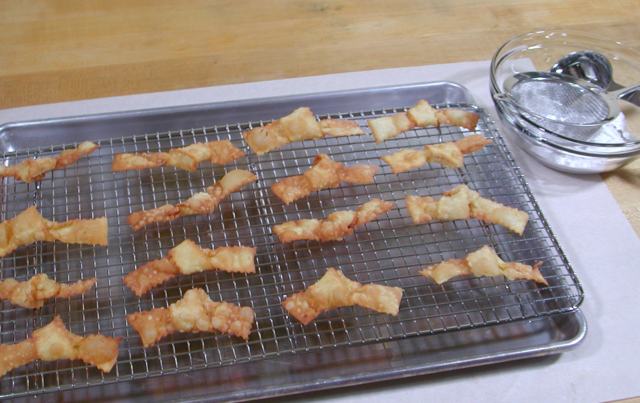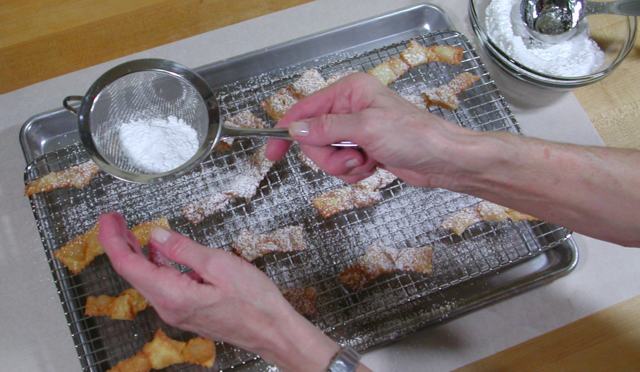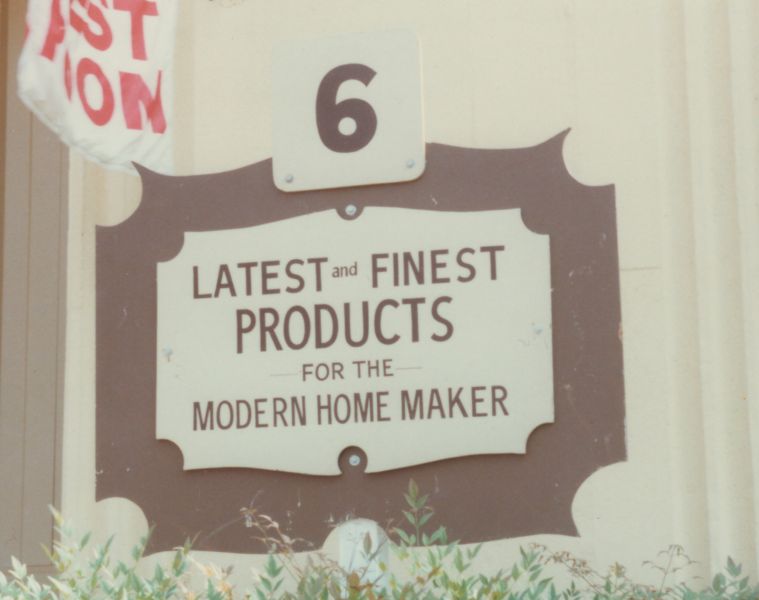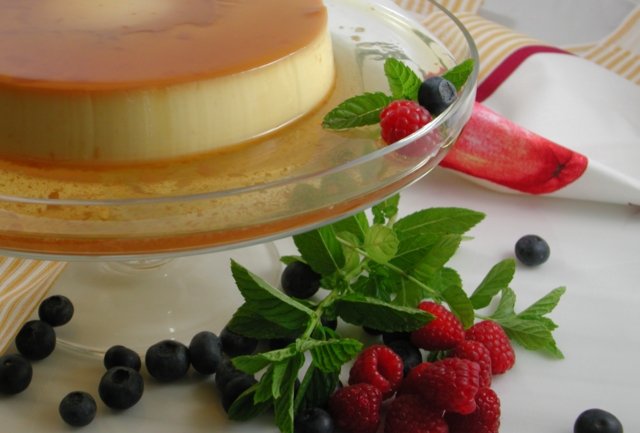That is the Crocetti Family Ravioli recipe in its entirety as my grandmother, Angela Barra Crocetti, (known as Mom) dictated it to my mother, Josephine. My mother, known to all who loved her as Jeff, transcribed the recipe in the endsheet of her 1962 edition of the American classic, Joy of Cooking. There are no other directions. This recipe assumes a level of proficiency that any good Italian girl would have achieved by the age of fourteen. One of my fondest memories of Mom was sitting at the kitchen table in her home on Inglewood Boulevard in Los Angeles with the sunlight streaming in over my left shoulder. I remember it as though it were yesterday. Mom placed her spianatoia (wooden pastry board) on her kitchen table. She scooped a mountain of flour onto her board, dug a well in the center and into that well she cracked the eggs. In went the salt. Now it was time for the milk. Yes, the milk. I know. Well, back then I didn’t. Most pasta recipes, if they call for any liquid other than eggs will call for olive oil or water. But some Italian cooks often use milk for their filled pastas. And she measured that milk in the most charming fashion, in the half shell of a cracked egg. No need for a measuring cup. This was Italian home cooking from the ground up. She made but one concession to the modern age, but more on that later. She took her fork and began to beat the eggs, salt and milk in her well. As she agitated the ingredients she brought in the flour, bit by bit, incorporating it until she had a shaggy mass. Down went the fork, up went her sleeves, and she began to knead the big mass of dough. After about ten minutes she was satisfied with her supple dough. I was amazed. She covered it with a kitchen towel and we went into her sewing room.
After about half an hour we returned to the kitchen to form the ravioli. Mom cut the dough not with a fancy rolling cutter, but with a kitchen knife. She covered what she was not going to use right away, picked up her extra long matterello (rolling pin) and began to work her brand of wizardry on the dough. Back and forth she moved her matterello, coaxing the dough to an ever greater size and greater degree of thinness. To my child’s eye it looked like magic. She rolled over the dough and out to the edge farthest from her, then rolled that far edge of dough over her matterello pulling it back to her, rolling and gathering the dough around it as she worked, sliding her floured hands across the dough-covered tool, stretching it with her hands, then rolling it out to the far edge again. She gave the dough a quarter turn and repeated the process. Over and over. The dough she rolled was gorgeous, so thin I could see the shadow of her hand behind it as she lifted and turned it. Alchemy. And the sound of the dough on the board, sort of a “shh-shh.” Her pasta dough was light, yet strong enough to form into ravioli that kept its integrity when boiled. And that is where I came in. I was responsible for crimping the edges of the chicken and cheese packets she assembled. I used a fork to crimp the edges all the way around, the perfect job for a little girl, the initiation to the women’s kitchen. I remember being so proud when we were finished. It made eating the treasures all the more enjoyable. Remembering those days in her kitchen and looking at the recipe now I am astonished by the economy of tools, not to mention verbiage. No fancy rolling cutter, no Atlas machine, no KitchenAid pasta roller, no measuring cups. In fact, I doubt if she used a teaspoon to measure the salt.
When I was in my twenties I became an altogether obsessive cook, I wanted detail. I needed to know absolutely everything. Ah, if only I had been born into the era of recipes accompanied by step-by step photography. But no, I was taught by cooks who said things like “When it is the right consistency, pour the batter into a pan. Bake in a fast oven until done.” WHAT!! Good grief! What was I supposed to do? Obsessive young woman that I was I wanted particulars. For many years I was utterly constrained by obsessiveness. Ask my friends. They’ll tell you. If a recipe called for 1 1/4 teaspoons of vanilla extract and I had only 1 teaspoon, I did not make the dish. Period. Time has passed, and I now embrace improvisation. I enjoy being one of those cooks who can play in the kitchen and make do with what she has. My Italian forebears made do because they had to. Making do with what one has in one’s pantry is the hallmark of la cucina casareccia (home cooking), la cucina povera (the cooking of the poor.) I am writing this post to tell all of you not to wait until you are my age to feel free in the kitchen. Try new things. Look at the recipes you see here and elsewhere and make them your own. Build on your fundamentals toward a cuisine all your own. And take notes! Let me know what you have tried. I would love to hear from you.
Coming up… Part Two – Making the Ravioli
- Benvenuta Cathy, Thank you for your very touching comment. Isn't it something how many memories and wonderful feelings food can…
- What a delightful post, and memories of how your mother made her pasta dough! And this is truly how many…
- Ciao Linda, I'm glad you liked this. "Memories are made of this" - just like Uncle Dean said...
- What a wonderful post Adri. I now know the derivation of your name "Barr" - I always wondered how that…
